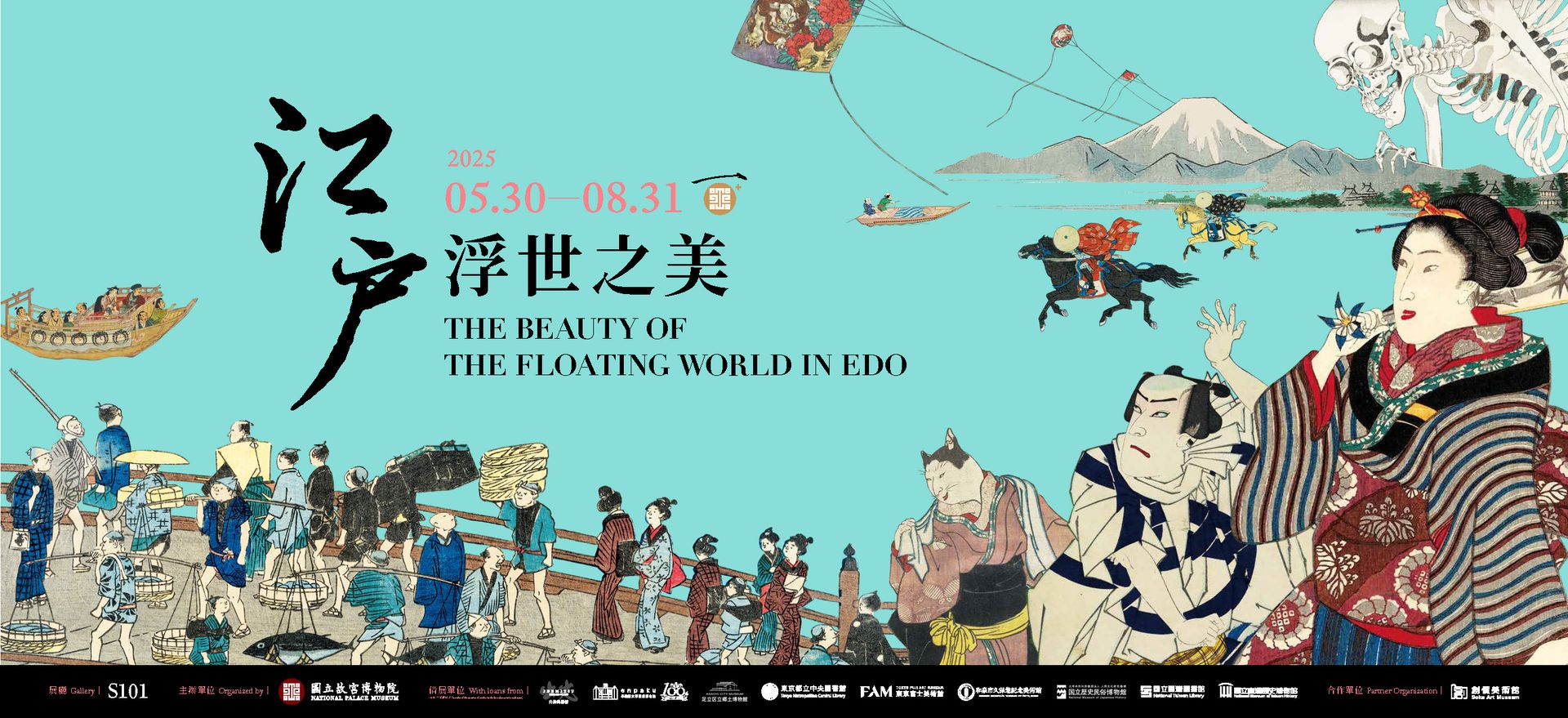Riverside Splendor
Edo, the former name of Tokyo, had Edo Castle situated at its center. From the early modern period through to the present day, this city has long played a central role in Japanese society, culture, arts, and politics. The name Edo is written with two kanji, the meaning of which translates as “gateway to the rivers.”
The etymology of Edo’s name tells us that viewing the city by way of the routes and scenery its rivers follow along is one of the best ways to get to know the cityscape. This section, themed around Edo’s Sumida River, serves as an entryway into the exhibition, guiding visitors toward a deeper understanding of the city as a whole.
-
Famous Views in Edo
Middle 17th Century
Anonymous
Idemitsu Museum of ArtsThis precious painting, designated as an Important Cultural Property of Japan, is a rare and invaluable work that vividly captures the diverse aspects of 17th-century urban life of Edo. The extremely limited number of surviving Edo folding screen paintings further underscores the exceptional rarity of this master piece.
This set consists of two folding screens, each composed of eight panels. The composition takes the Sumida River as its central axis, connecting various famous landmarks of Tokyo from north to south. The depicted area extends from Ueno and Asakusa in the north, crossing Nihonbashi, and stretching further south to Edo Bay and Shinagawa.
Additionally, the painting offers a rare glimpse into early Edo-era customs and social scenes, featuring depictions of the original Yoshiwara pleasure district, youth Kabuki performances, and public bathhouses with female attendants (yuna).
With over 2,200 figures depicted across the vast expanse of the folding screens, this work provides viewers with a rich and detailed panorama of early Edo's urban landscape and daily life.
-
One Hundred Famous Views of Edo: Yatsumi Bridge
1857
Utagawa Hiroshige
Adachi City MuseumBeneath the riverside willow trees, the railing of Isshiki Bridge can be seen. This location marks the intersection of major moat waterways, and since eight bridges can be viewed from this vantage point, it is also known as "Hachimi Bridge" (Eight-View Bridge).
Looking into the distance, a setori-bune (cargo transport boat) can be seen navigating the river, operated by two boatmen. On the right, a fishing boat has raised bamboo poles, lowering a four-handed net (shijū-te-ami) into the water, while on the left, another fishing boat has already pulled up its net.
In the background, Edo Castle stands beneath Mount Fuji and the Tanzawa Mountains. The dramatic contrast in scale between the foreground and background creates a sense of compressed depth and vertical perspective.
This artwork is part of "One Hundred Famous Views of Edo" (Meisho Edo Hyakkei), a series of 118 woodblock prints, considered Utagawa Hiroshige's ultimate achievement in landscape art. The prints were released between February 1856 and October 1858. However, since Hiroshige himself passed away in September 1858, it is generally believed that three of the works in the series were completed by the second-generation Utagawa Hiroshige.


